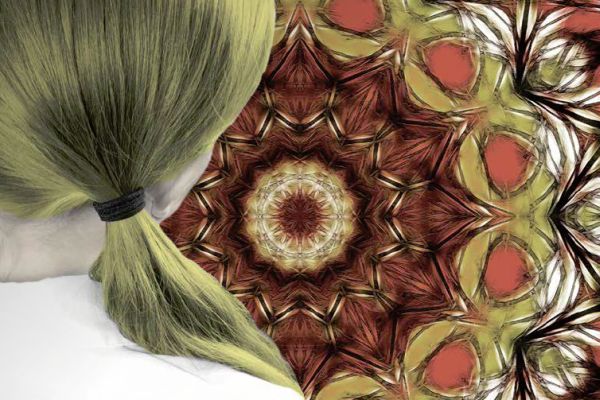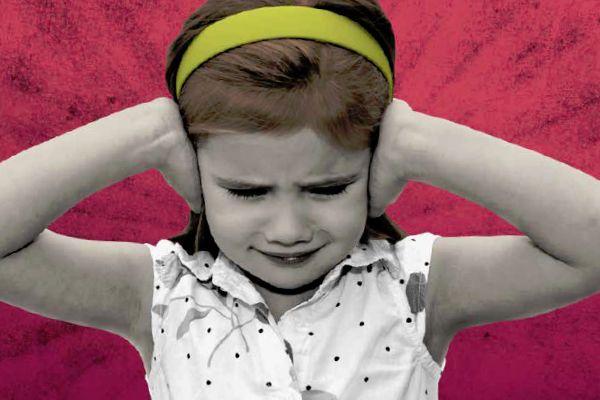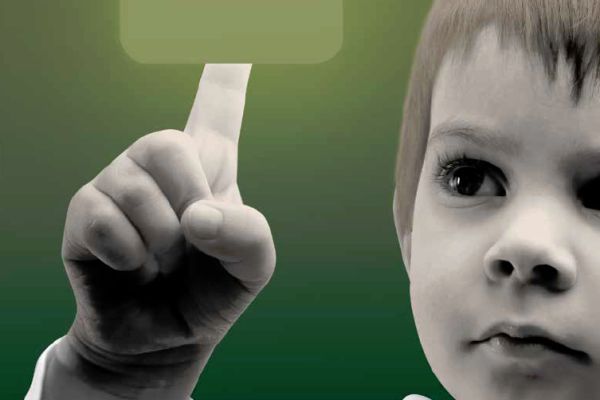For the second time recently, I have had the privilege of presenting a workshop at a school counsellors’ conference. It’s also the second time I have struggled with the pretty much open brief of what the workshop could be about. Usually, I prefer to be given a subject to speak on, a direction along which to organise my thoughts, to consult my bookshelf, leaf through some indices, ponder, review and reflect. I needed to come up with something relevant to a broad audience of counsellors and other professionals working with young people.
A workshop is not a lecture – it has to have its feet on the ground, preferably in the therapy room. It needs to be heard in a way that is easily taken up and assimilated by a diverse and critical audience.
My prevaricating was settled, in a rather unexpected way, at a meeting with my supervisor. We were discussing one of my clients, a student at the school where we both worked, who my supervisor thought he had seen in the canteen that day. To make sure we were talking about the same student, my supervisor offered a description. Physically we were talking about the same person, but subjectively, emotionally, we were discussing different people. He encountered ‘Sarah’ as tough, confident to the point of being combative and eager to stand apart from the crowd. I knew her as anxious, wary of her peers after a nasty bullying incident a couple of years ago, and someone who donned her spiky hair and leather jacket like a soldier might helmet and body armour.
Later, I reflected on the supervision. I wondered how Sarah had managed to elicit such different responses from two therapists practising at the same school and who shared a psychodynamic modality. This puzzled me until I realised that, although we received the information through different channels, Sarah was sending the same message to both of us: ‘I’m different and I don’t want you to get too close.’ I decided I would take the theme of the often superficially conflicting messages sent by young clients’ appearance and use it for my workshop.
It’s always exciting meeting a client for the first time and I still feel quite nervous as the time approaches. Working in a system with no separate assessment session heightens the feeling of anticipation. The first visual encounter happens when the young person ‘appears’ in the room – or not. Sometimes they might linger outside, unsure of what to do. Should they come in, knock, or wait to be ‘collected’? I have developed a kind of sixth sense for someone waiting on the other side of the door. This is my cue to smile, be reassuring and invite them to join me. Someone who bursts in without knocking? Well, they could be just as nervous as the person who waits to be let in, or they could be looking for a first session that contains them and marks out the boundaries. Often, the factor that makes a difference to my initial approach is how they appear and interact with me in our first session together.
What do we know?
Preparing for the workshop, I browsed the literature for opinions on client appearance. There wasn’t really much on offer. Psychodynamic and person-centred literature carries lots of material on clients conveying the unconscious thought through metaphor or humour, but that requires verbal engagement. If you want information on the subject of non-verbal cues, the place to look is literature on clinical interviewing, where appearance and body language are given much more credence. Perhaps this is because an interviewer has so little time to form a relationship and gather information from the subject. All levels of communication have to be open to being understood. The same could be said of therapy, especially in school, where there is no obligation for the student to come back, or in the increasingly necessary practice of time-limited therapy. At a time in their lives when teenagers are feeling at their least articulate and most vulnerable, clothing can send out a thousand simultaneous messages, both conscious and unconscious. They can tell others to join up, or stay away, without the self-consciousness of verbalisation or explanation.
Therapists have a great opportunity, not only to help clients, but also for furthering their self-knowledge when they study their reactions to appearance. In everyday life, we tend to self-censor these thoughts as part of good manners, of not being mean or judgmental. When we feel wary, or envious, or disapproving of how others present themselves, we tend to stop the thought right there or modify it into something kinder to the person under scrutiny and, by extension, ourselves. I think it can be more useful to go with those thoughts because that person we’re looking at, our client, is trying to tell us something. ‘You must know what famous philosophers know: the importance of knowing thyself. Because you are the instrument through which you hear and respond to clients…’1 In being honest about our reactions to clients, we give ourselves opportunities to discover what the world might be like for them.
One of the privileges of being a school counsellor is that these transgressions can be enjoyed and discussed without prejudice. The downside is that sometimes I find myself talking about things that most people strive to avoid, like someone’s weight, cleanliness or skin condition. If, according to Freud, ‘the ego is primarily a body ego’,2 what happens when you’re a teenager who will do anything to prevent your body being noticed? If the body is a protective enclosure that can be used to defend from attack,3 how does it feel when the container itself is judged to be inadequate?
When I facilitated my workshop, I suggested an exercise in which participants were encouraged to experience their own adolescence. Here, I asked people to get into groups of four and talk about what clothing meant to them as teenagers. Observing the groups, I was struck by the body language being offered: people were using their hands to describe items of clothing, then drawing their hands inwards, flattening palms on chests, or wrapping fingers around their legs, touching insteps and arches to better describe favourite boots or shoes. Harmonising with Freud’s link between the psyche and the corporeal, every sentiment encountered in the detail of adolescent self seemed to come back home to the body.
At schools where there is a uniform, rebellion can take place in a myriad of small ways via appearance. Students who know they will be asked to remove their make-up wear it into school anyway. It’s the same with nail polish. Students relish pushing against institutional boundaries with their appearance. One workshop participant spoke about a client who wore brightly coloured hairgrips on the sleeve of an otherwise immaculate uniform. The language of socks continuously fascinates. Socks take on a whole language, sometimes literally, in the therapy room.
A fairly typical representation of a 15-year-old boy, ‘Steve’, sits down in the therapy room in silence. Apart from answering some questions about his family history, Steve’s vocabulary extends only as far as 'I s’pose', ’salright’ and 'don’t know, really'. The only things that talk to me in the first session are Steve’s socks, which say ‘Sex God’ in big orange letters. Oh my. I tell Steve I’m surprised he hasn’t been caught and asked to remove the socks. He smiles. His mum hates them too, he says, but he bought them himself from his paper-round money, so she can’t say anything too much about it. For Steve, the socks not only represent an act of autonomy, but of rebellion. They’re probably one of the first choices he’s made about how he wants to appear to the world. For me, they’ve not only started a dialogue with Steve but also given me a small insight into his self-development.
What disturbs us?
We had a brief section at the workshop dedicated to the things delegates found most disturbing about a young person’s appearance. There was some discomfort around ears with multiple piercings and, particularly, ear stretchers – a mild aversion that I admit to sharing. I’m also strangely comforted by these feelings, seeing them as a division between the young and the old that needs to be experienced and acknowledged in the work by therapist and client. Perhaps body adornment is an explicit reminder of the tribal affiliations so important to teenagers’ social engagement and experience.
A typical sixth-form student, ‘Donna’, came to see me, having been referred by a teacher. She had fainted in PE and the teacher, in helping her to her feet, had noticed how slim Donna was. Concerned there might be some underlying problem, she suggested Donna ‘talk things over’ with me. Donna was 16. She sat opposite me in old trainers, jeans and an ancient faded T-shirt. Everything she wore was a ghost of its original shade and fit. She wore no make-up and her midlength blonde hair was uncared for. There was no colour anywhere in the picture, no individuality, no life. Donna wanted me to believe that she didn’t really think about food much and certainly didn’t have an eating disorder. That day she had got up late and raced into school, straight into the PE lesson. She just ran out of steam. When I asked the workshop group for their reactions to Donna’s presentation, the experiences of some of the participants wholly justified the PE teacher’s concern. They reminded me and the group that, as well as being a subtle tool for therapeutic discovery, young people’s appearance can lead to more pressing and practical deductions about their welfare. Some delegates who had noted and acted upon outward signs of bodily neglect went on to uncover real safeguarding concerns, information that might have remained hidden had the therapist not asked difficult questions.
As I consulted with school staff, and as the therapy with Donna unfolded, it transpired that Donna came from a family where her older brother was the ‘problem child’. All the family’s energy was diverted into him, leaving little time for Donna. But that was fine because Donna was a good girl – she was no trouble at all. Her refusal to be noticed was both a demonstration of difference from her brother and an attempt to hold the family together. She was angry at her brother for the way he treated their parents, but also felt anger towards her parents for allowing his behaviour to dominate the household. Donna couldn’t reconcile her underlying anger with her desire to be ‘good’. She had shut down her emotional life to the point where any self-expression or acknowledgement of her own needs seemed dangerous. The less physical presence she had, the safer she felt, but this had the side effect of isolating Donna from her peers, who were busily constructing a life outside the parental home. Knowing that she was going to university next year, Donna and I addressed her loneliness, primarily by working through her anger. Slowly, she began to hang around with other students and pick up some of their cues on clothing and identity.
Retreating to baby mode
One of my enduring interests as a therapist is in the developmental relationship between infancy and adolescence. Teenagers do seem to retreat to the demonstrative, non-verbal behaviour of early childhood when under pressure: they stamp their feet, swear, slam doors and storm out. Often, by the time they come to see me, they simply don’t know how they are feeling anymore, let alone how to put it into words, so a kind of uneasy silence ensues.
When a student feels unable to talk in therapy, non-verbal communication can give valuable insight into their inner world. The currently unspeakable can be observed through movement and display as a precursor to the speakable – ‘the body and the interpersonal space are the sites of these translations’.4 By offering a developmental space that uses physical cues as a link to the emotional world, we discover and explore some of the key moments in adolescent life.
Like Freud’s ‘King Baby’, adolescents have found ways of holding their parents in thrall while being unable to control their own bodily functions. Feeling out of control of their own bodies and lacking power in society, teenagers may feel that, in provoking a reaction from adults, at least they are able to prove to themselves they truly exist. By wearing provocative clothing or adorning the body with piercings and tattoos, they strive to take control of their body as well as communicating their separation from parental values: ‘I’m not like you!’ Conversely, irritating or shaming parents with their appearance could perhaps express the adolescent’s own feelings of shame or inadequacy. Maybe it’s not surprising that adolescents with the least to say often have the most startling presentations.
As an only child, the main objective of my teenage fashion choices was to mark myself out from my parents. The workshop group reminded me that differentiation from siblings could also be a prime motivator for how adolescents choose to look. The roles in the family that were taken up or given, both overtly and unconsciously, were cited as important influences on teenage style. Perhaps if we perceive we have a sister who is ‘prettier’ than us, it suits us to make our own statement of what ‘pretty’ is. By latching onto a certain trend, looking a certain way, we start to define new familial groups and as a result, new measures of our own self-worth. I remember one teenage client underlining his recovery from depression by telling me he had ‘moved out of the Emo shed for good’. (For readers unfamiliar with the term, ‘Emo’ is parlance for feeling ‘emotional’, wearing lots of dark clothing and cultivating a brooding, slightly consumptive, countenance.)
Another Year 12 client came with a kind of ‘health warning’ from other school staff. There was no doubt in their minds that he needed the referral; ‘He’s so miserable!’ said one teacher. His Head of Year admitted: ‘He frightens me a bit. Nothing he does, just, he’s so dark, so quiet, do you know what I mean?’
He was indeed dark and quiet. He is also one of the warmest and wittiest young people I have met. He came from a tragic and somewhat violent family past, which we talked about, but he seemed to have come to terms with it in a healthy-enough way on his own. He was well aware of how other people reacted to his appearance, which turned out to serve as his defence. It saved him linking up with people, pursuing friends, who would later abandon him when they learned about his past. That was depressing, he said. ‘I know that if people can handle how I look, they can handle the things that have happened – they can handle who I am.’
Laura McDonald is a psychotherapeutic counsellor. This article was inspired by her interest in adolescent issues and the role of the school counsellor. Her Master’s dissertation in psychodynamic practice from Oxford University examined work relationships between the school counsellor and other school staff.
More from BACP Children and Young People journal

Trauma: The body, the play and the drama
Open article: Sue Jennings writes about the building blocks of trauma recovery. BACP Children and Young People, September 2015

Obsessional avoidance of everyday demands
Open article: Phil Christie introduces pathological demand avoidance (PDA), describes its symptoms in children and young people, and explains how therapists, teachers and parents can understand and work with it. BACP Children and Young People, June 2015

Digital futures
Open article: Louis Weinstock suggests we encourage children to consult their own experiential evidence concerning the time they spend using digital devices, and that we harness the power of digital technology to enhance children’s internal capacity for wellbeing. BACP Children and Young People, March 2015
References
1 Somers Flanagan J, Somers Flanagan R. Clinical interviewing. 3rd edition. Hoboken: Wiley; 2003.
2 Freud S. The ego and the id. In: Strachey J (ed). SE Vol XIX. London: Vintage; 2001 (pp19–27).
3 Fisher S. The evolution of psychological concepts about the body. In: Cash TF, Pruzinski T (eds). Body images: development, deviance and change. New York: Guilford Press; 2009 (pp3–20).
4 Koch SC. Basic body rhythms: from individual to interpersonal movement feedback. In: Tschacher W, Bergomi C (eds). The implications of embodiment. London: Imprint Academic; 2011 (pp151–171).
